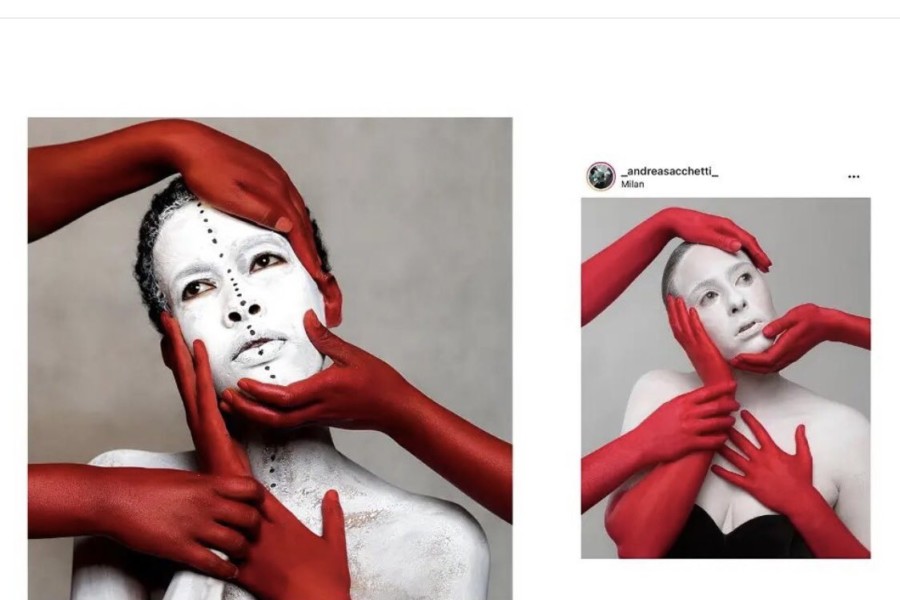A Student Copied an African Artist’s Work, and It Was Showcased at the Milan Photo Festival
Simon Njami engaged Ethiopian artist photographer Aida Muluneh for an exhibition entitled The Divine Comedy: Heaven, Purgatory and Hell Revisited by Contemporary African Artists at the Smithsonian’s National Museum of African Art in 2014. Muluneh created her “99 Series,” depicting a model with both body and face covered with white paint while hands dipped in red paint – an interpretation that won first prize at this show.
Sarah Jacobs and Allen Murabayashi of PhotoShelter’s podcast Vision Slightly Blurred discuss Aida Muluneh’s work being plagiarized, as part of this episode of Vision Slightly Blurred.
Muluneh describes her Inferno series as the gray existence of both our country’s past and individual suffering, in her artist statement. This striking photo captures this iconic image: the model has one hand placed against her cheek and one resting against her chest; three red hands reach from outside the frame to grasp various points on her body while her gaze extends off into the distance; her head tilts slightly while she looks away; it is contrasty, vibrant, and visually arresting. In her artist statement she refers to this piece as Inferno as depicting not just our collective pasts but also our individual pain; an image depicted here can only encased within this artwork by its unique subjectivity: it embodies all three characteristics in its beauty: contrasty vibrancy; vibrant color saturation and visual appeal are all elements present;
On Twitter, African Women in Photography quickly made note of an image created by an Italian photo student named Andrea Sacchetti as part of his group exhibition at Milan Photo Festival 2021.
Sacchetti plagiarized Muluneh without his permission or acknowledgement and created diptychs using models painted white with red hands posed against gray backgrounds; his images lack both emotional impact and technical proficiency (i.e. lower contrast levels, less skilled hand styling and vacant gazes compared to Muluneh’s original).
After receiving numerous retweets, the Festival issued an Instagram statement acknowledging the “identical” image and emphasizing they had no intention of plagiarizing against such a prominent author and we know the young photographer has already apologized to her.”
Recent history is littered with accusations of plagiarism in art and photography. Recently, Ren Hang was accused of plagiarizing Ryan McGinley, Guy Bourdin, Robert Farber and Robert Mapplethorpe’s works; Iranian photographer Solmaz Daryani accused Maximillian Mann from copying her Lake Urmia work; however none of these images compares in terms of similar poses or scenes as Sacchetti’s plagiarism of Muluneh.
U.S. copyright laws do not allow creators to assert ownership over an idea or concept; photographers have had limited success using copyright in cases of visual plagiarism; however, that shouldn’t stop individuals from pushing back against obvious instances.
Imitate what you admire is an effective learning technique in any art form, including jazz. Jazz students transcribe Charlie Parker solos to study not just his notes but his phrasing and timing too – something photography students often do to deconstruct lighting patterns, lens selection etc.
But it is truly unprecedented for a student who commits plagiarism against a celebrated African artist to enjoy continued support from a major European photo festival. By showing Sacchetti’s works at subsequent exhibitions, tacit approval is given for others to commit similar offenses without incurring consequences for doing so.
At a time of increased awareness about uncredited appropriation from Black creators, this unfortunate outcome speaks volumes about Milan Photo Festival’s attitude toward plagiarism and more specifically against an African artist’s moral rights.
